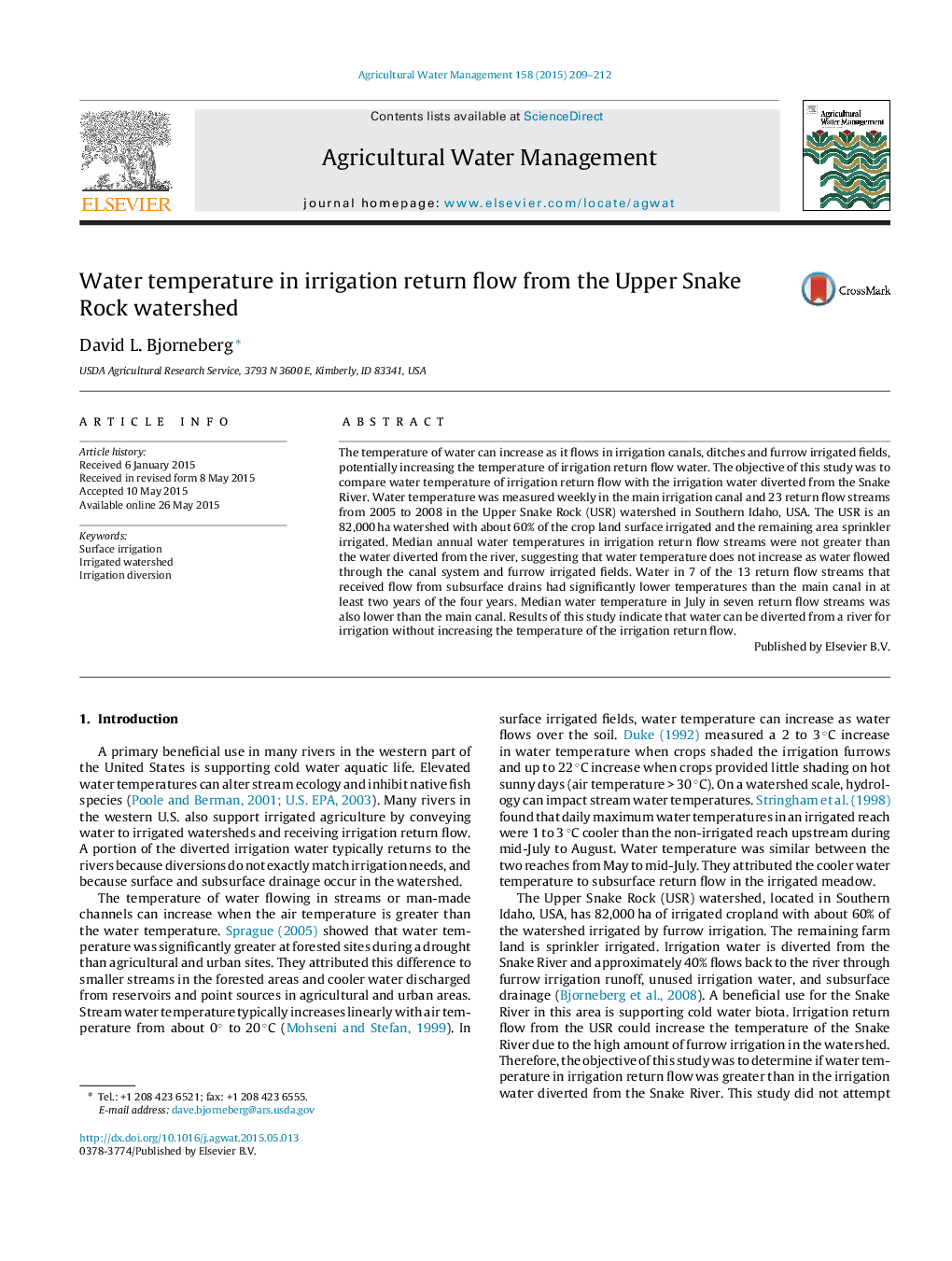| Article ID | Journal | Published Year | Pages | File Type |
|---|---|---|---|---|
| 4478436 | Agricultural Water Management | 2015 | 4 Pages |
•Irrigation return flow equaled 30% of the diverted irrigation water.•Return flow water temperature was not greater than the diverted irrigation water.•Subsurface drain flow decreased water temperature in some return flow streams.•Water can be diverted from a river without increasing return flow temperatures.
The temperature of water can increase as it flows in irrigation canals, ditches and furrow irrigated fields, potentially increasing the temperature of irrigation return flow water. The objective of this study was to compare water temperature of irrigation return flow with the irrigation water diverted from the Snake River. Water temperature was measured weekly in the main irrigation canal and 23 return flow streams from 2005 to 2008 in the Upper Snake Rock (USR) watershed in Southern Idaho, USA. The USR is an 82,000 ha watershed with about 60% of the crop land surface irrigated and the remaining area sprinkler irrigated. Median annual water temperatures in irrigation return flow streams were not greater than the water diverted from the river, suggesting that water temperature does not increase as water flowed through the canal system and furrow irrigated fields. Water in 7 of the 13 return flow streams that received flow from subsurface drains had significantly lower temperatures than the main canal in at least two years of the four years. Median water temperature in July in seven return flow streams was also lower than the main canal. Results of this study indicate that water can be diverted from a river for irrigation without increasing the temperature of the irrigation return flow.
